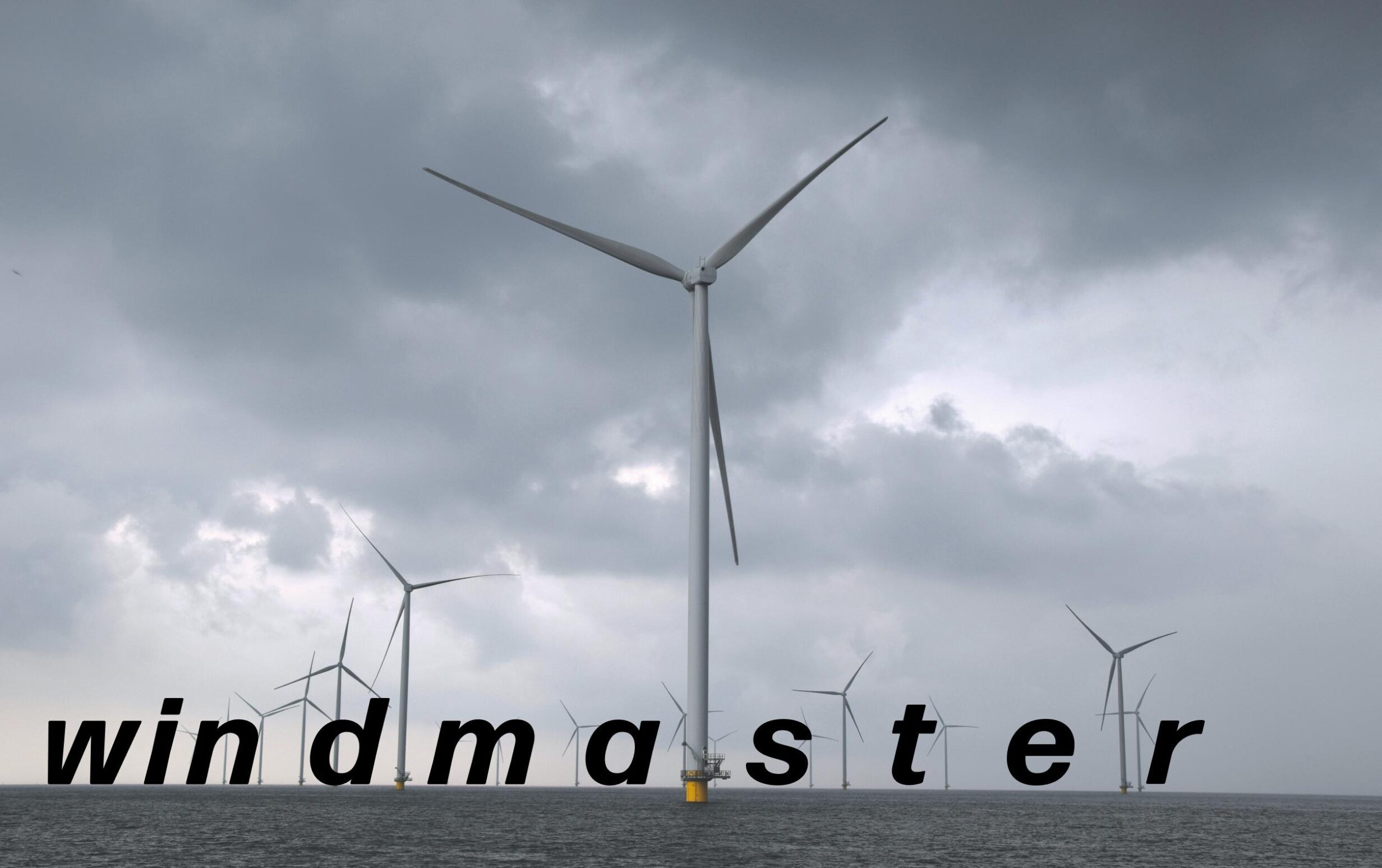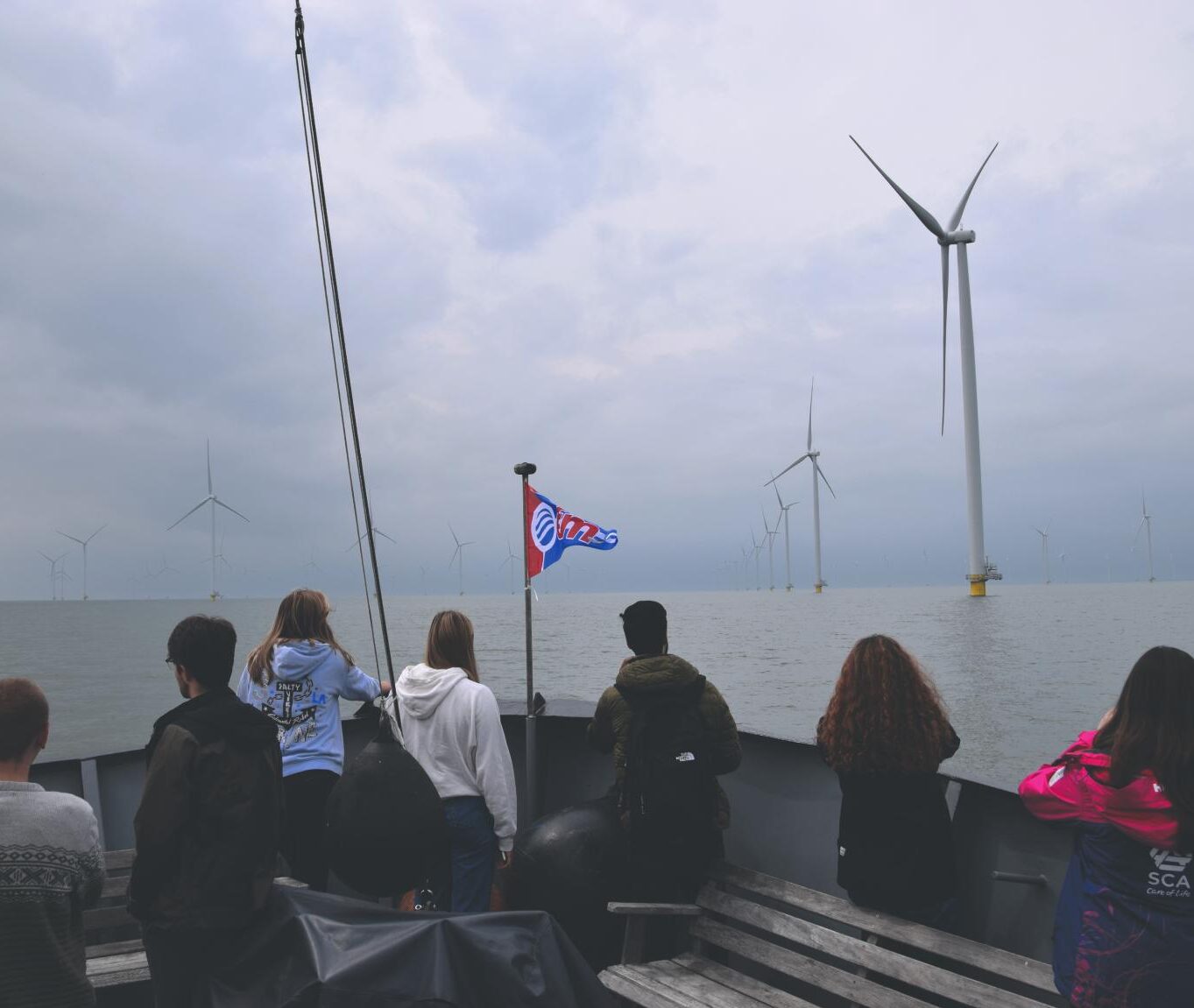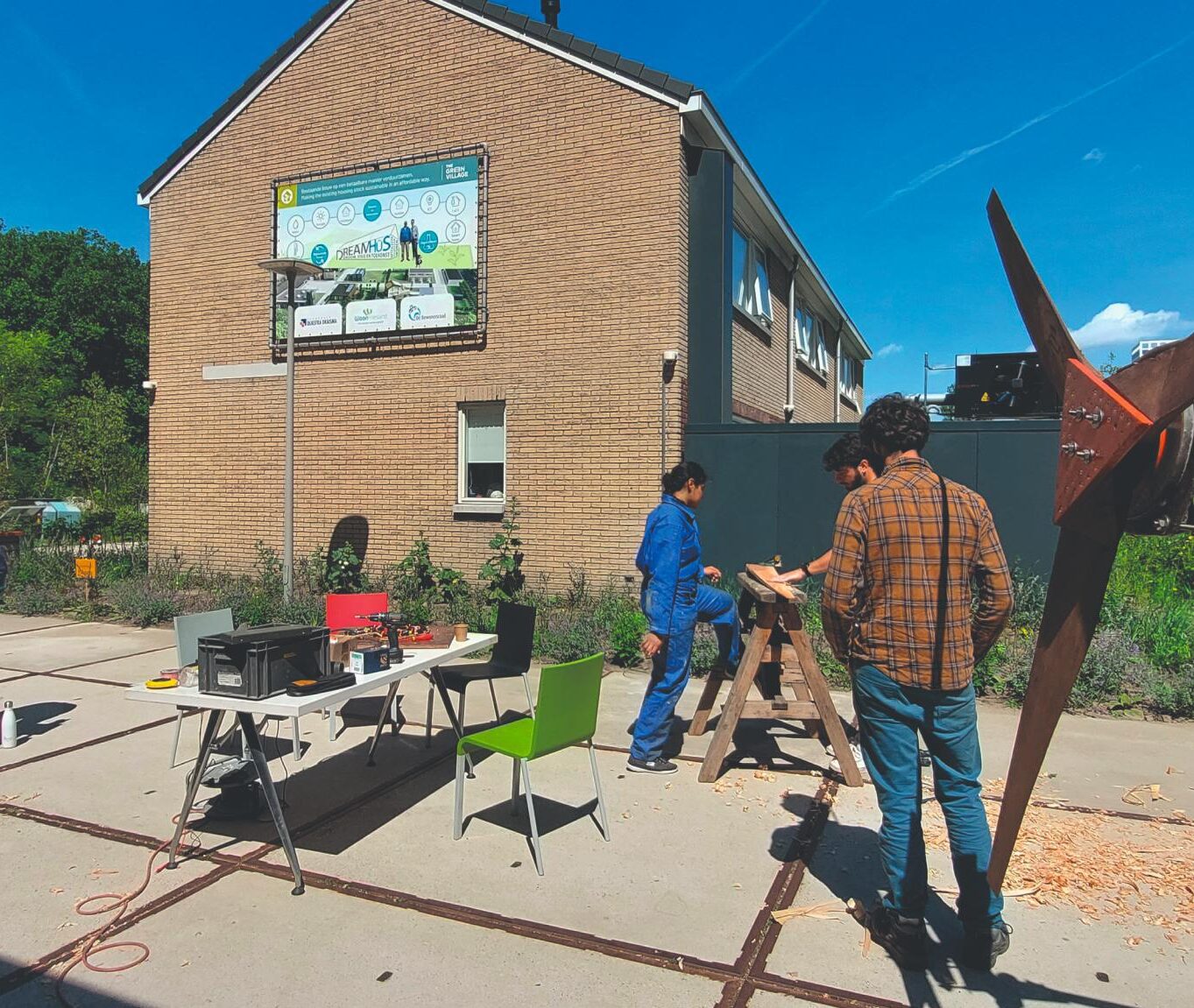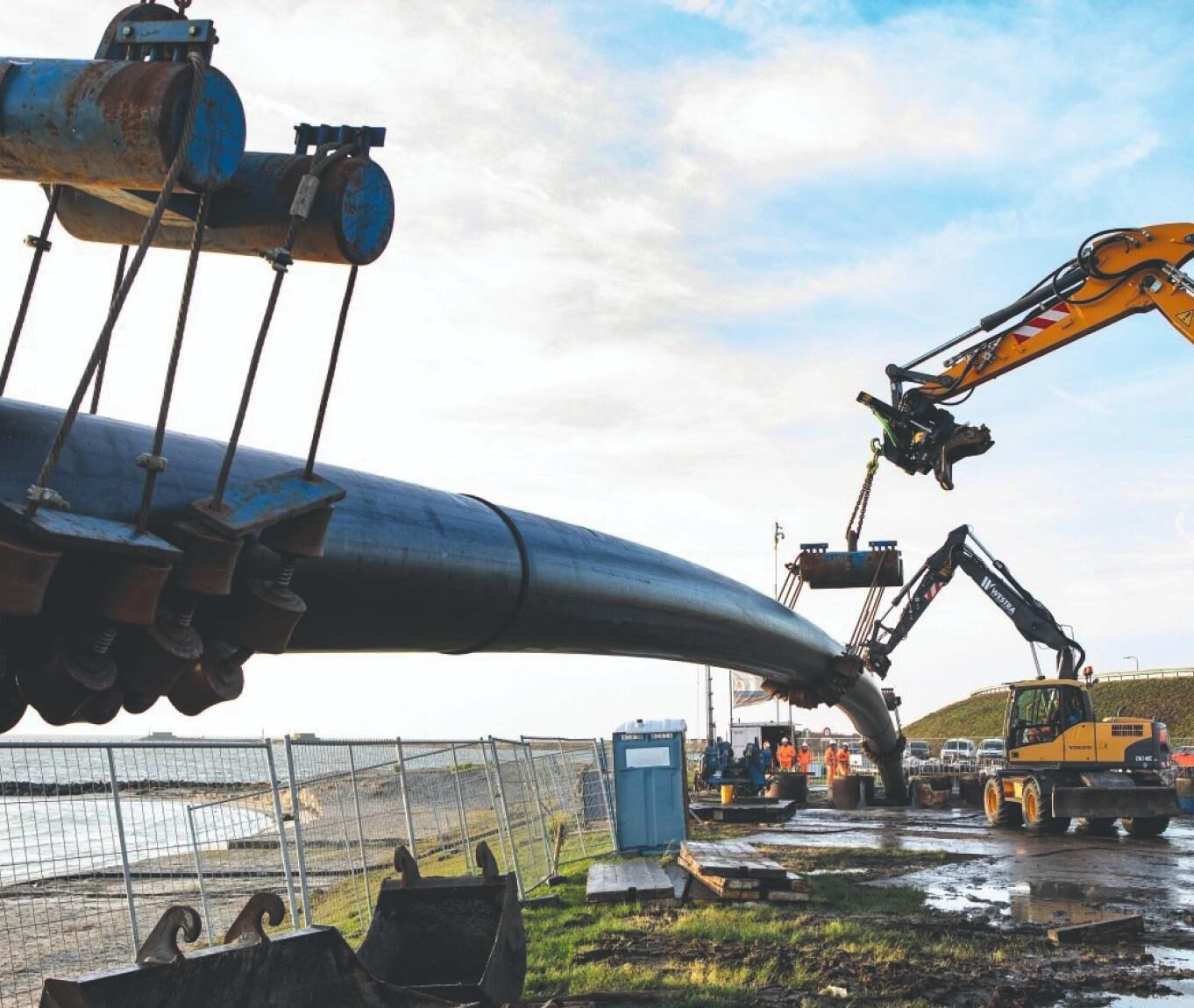Matchmaking & collaboration Windmasters
Wind Master
trains to become

© Windpark Flyslân
Text: Sija van den Beukel
The European Wind Energy Master (EWEM) programme trains students from all over the world to become wind energy specialists. “Wind turbines are an emerging technology and will be in the spotlight in the coming years. It is challenging and motivating to be able to contribute to that.”
On a Wednesday morning in early June, some 30 students gather at the Faculty of Aerospace Engineering. Due to the weather forecast, a number of students called in last night to excuse themselves from the boat trip to the Fryslân Wind Farm in the IJsselmeer. “It’s awful weather,” the students who have turned up groan. “No!” Douwe Velds, the student assistant who organised the excursion, corrects them. “The strong wind is ideal for our purposes.” Wind farms on lakes and at sea are increasingly in favour, now that there is almost no room left on land. Countries on the North Sea like the Netherlands, Denmark, Germany and Belgium now want to substantially increase their offshore wind capacity. In fact, a tenfold increase to 150 gigawatts of wind power is planned by 2050. This is enough to supply 200 million European households with green electricity.
‘The industry is desperate for engineers’
A new generation of students is being trained to make this possible. They are following a European Wind Energy Master (EWEM) at four universities in Denmark, Norway, Germany or the Netherlands. TU Delft is the coordination centre for this specialised Master’s degree programme, which is celebrating its tenth anniversary this year. “Master’s programmes for wind turbine all-rounders already existed,” explains Carlos Simão Ferreira, a TU Delft Professor of Wind Energy who coordinates the programme and has joined the trip to Friesland. “But wind turbines are becoming increasingly complex. Just as you don’t have all-round aviation engineers, we should not train generalists for the wind industry either.” There are four specialisations. The two biggest are Offshore Engineering (how to install wind turbines at sea) and Rotor Design (how to design the blades to catch the most wind). Then there are specialists who focus on how wind turbines should be placed in relation to each other (Wind Farms and Atmospheric Physics) and how mechanical motion is converted into electricity (Electrical Power Systems).

© Silja van den Beukel
Field trip to Wind Farm Fryslân. Watch the video

© EWEM
Master’s students work on a wind turbine at The Green Village.

© Windpark Flyslân
Windpark Fryslân under construction.
Also on the boat is Cees van Vledder, who is one of two students in his year taking Electrical Power Systems. “I had completed TU Delft’s Bachelor of Applied Physics and wanted to put the theory more into engineering practice. It also really appealed to me that there are two periods studying abroad, while you still stay connected to TU Delft. Wind turbines are an emerging technology and will be in the spotlight in the coming years. It is really challenging and motivating to be able to contribute to that.”
All the Master’s students start the programme together in Denmark. “That’s important for teambuilding,” says Simão Ferreira. Alumnus Kuymayl Sarwar looks back fondly on those days during a video chat. He started with the first cohort of 2012. “We were all together at the campus of the Technical University of Denmark, in a kind of shipping container home. Everyone was out of their comfort zone. Apart from one Dane, we were all from abroad. That helped enormously to get to know each other.” Van Vledder agrees. “Beside studying, we are all looking for adventure. On weekends in Denmark and Norway, there were plenty of fellow students who wanted to trek into the mountains. That added a lot to my experience of studying and opened up a whole new world for me. It is a pity that when you get back to Delft you don’t see as many international students. As a Dutch student, you really have to seek contact with them yourself.” For international students, the transition to TU Delft in the second semester takes some getting used to, says alumnus Stathis Tsigkris on the phone. “You have to adapt to a new system, and the workload is higher. But there is also a lot of cooperation between the students. I was not very good in MatLab and the level was very high. But my fellow students helped me tremendously to understand MatLab.” Simão Ferreira acknowledges that the workload is indeed challenging for students who have not studied at TU Delft before. “But we organise lots of events to promote bonding between students. We also sponsor the activities of the Aeolus study association.”
Ambitious students
The excursion to the Fryslân Wind Farm is one such activity to foster bonding between students. It quickly becomes clear how passionate the students are: sailing among the wind turbines in the IJsselmeer, literally every conversation focuses on these iron behemoths, from a line marked on a rotor blade to the connection to the electricity grid. Simão Ferreira visibly enjoys the trip. “When you listen to them talking and hear how enthusiastic and passionate they are… that’s what you do it all for.” In an ideal world, that attitude will be continued in professional practice. “You often have to compete to win projects in this industry,” says Tsigkris. “But if all wind engineers were to share their information and work together, it would move the wind industry forward a lot faster.” The ambitious EWEM students will certainly help. The majority of students will graduate within 24 months. This is exceptional for a TU Delft Master’s degree. In fact, 95% of EWEM students
will find a job in the wind energy sector. “The industry is desperate for engineers,” says Simão Ferreira. EWEM students have an edge with employers, as alumni have noted. The number of applicants for the Master’s has seen a natural increase. “The 2022 cohort consists of over 30 students. Considering this trend, we foresee a doubling in the next five years,” says Simão Ferreira. That will not be enough to meet the needs of the ever-growing wind industry. “But new programmes are also being developed elsewhere in the world.” Looking back, Sarwar is satisfied with what he learned in the Master’s programme. “Moving several times takes you out of your comfort zone and forces you to adapt. This not only makes the Master’s degree technically challenging and a good entry point into the industry, but it also helps you to grow as a person. As an international student, it can be quite difficult, but I am immensely grateful for the experience.” It has started raining on the boat. Some students go below deck, but most pull up their hoods and stay outside. The windmills stand unfazed, their rotors turning relentlessly.
In the online course Aeroacoustics, you will learn how to reliably measure, verify and predict acoustic performance and use cutting-edge knowledge of aeroacoustics to develop noise reduction strategies. For all TU Delft’s online courses, visit online-learning.tudelft.nl
4 universities, 50 nationalities
The EWEM programme is a collaboration between four universities: TU Delft, the Technical University of Denmark, the Norwegian University of Science and Technology, and the Carl von Ossietzky Universität Oldenburg. TU Delft coordinates the Master’s programme, so the proportion of TU Delft students is currently still high: a quarter to a third of the 30-40 students annually. The rest of the students come from all over the world. Over the past decade, students of more than 50 different nationalities have participated in the Master’s programme.
